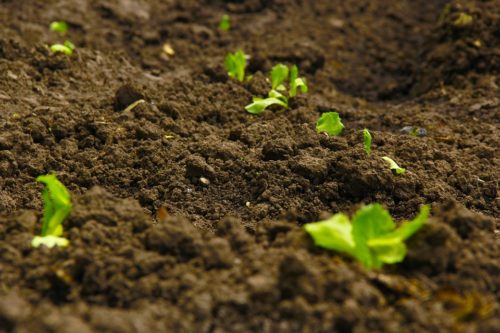This article was originally published on Nov. 7 in The Hill Times.

As the climate changes, we must radically improve soil health in Canada.
Healthy soil is the heart of our food system and, by every conceivable measure, we are making our soil sick. In Ontario, soil organic matter—a key determinant of soil health—is now decreasing on 82 per cent of farmland. Since 1948, the soil organic matter in Essex County, in the province’s far south, has declined by more than half on the vast majority of farms. Meanwhile, 54 per cent of farmland across Ontario now has high levels of erosion risk.
These trends are present across Canada. The message, then, is clear: Canada’s soils are in crisis. So, as the federal government gears up to implement a food policy for Canada, soil health must be sufficiently understood and supported.
Maintaining soil health is crucial to both sustainable food and climate systems. Healthy soilshave the capacity to maintain their structure and transform and store carbon through decomposition and nutrient cycling, while supporting insects, bacteria, and other biological populations. For soil to sustain food production, conserve our environment, and contribute to climate change mitigation, it must be managed in ways that minimize loss, erosion, and contamination. Instead, though, phosphorous-filled topsoil is

being washed downstream and is polluting lakes, rivers, and underground water supplies.
For the goal of healthy soil systems to be achieved, holistic policy, programming, and funding initiatives must be established in Canada, much of which must then be executed at the provincial level. Right now, our best method of measuring soil health is by assessing soil organic matter. However, since soil systems function within larger environmental systems, soil health cannot be limited to the farm itself. System-level or landscape-level assessment is necessary, and Canada is particularly weak in this regard.
Ontario is to be commended for identifying the need for a systems approach, with its recently released Agricultural Soil Health and Conservation Strategy. However, the province must go further by providing concrete supports for farmers to build soil health and minimize soil contamination. For instance, provincial soil strategies must be accompanied by funding programs; expanded extension services; and clear, objective, and measurable goals for soil health.
To make significant soil-health gains while supporting food growers, provinces should set concrete farm- and system-scale soil-quality objectives, as well as steps for achieving them.

These goals should provide clear indicators for assessment (such as organic matter, biological activity, soil stability, and nutrient balance), while recognizing that soil systems function within specific environmental, social, and economic contexts. Provinces should work with conservation authorities and municipalities to set local standards and baselines, while integrated with provincial water, air, and biodiversity assessments.
To support farmers in this transition, soil strategies must be more specific and ambitious in identifying resources and financial tools to help them. For instance, soil organic matter should be measured in every field every five years. Farmers who have good organic matter levels or who are increasing their organic matter levels could then be incentivized through, for instance, lower property taxes. They are, after all, investing in the foundation of food production and in ecological sustainability.
Landowners with poor or declining SOM levels should similarly pay higher property taxes. Municipalities should be supported by federal programs to ensure that net aggregate lower property taxes do not adversely affect their operations.
Since soil erosion and degradation are known to worsen when fields are left bare, a five-year goal should be established for ensuring that a minimum of 50 per cent of farmland is covered during the non-growing season.
While the Ontario strategy identifies the need to diversify the crops farmers grow, voluntary measures do not go far enough. Standards should be established, such as a minimum three- or four-crop rotation, including ecologically beneficial crops, such as perennial forages.
Soils are foundational to healthy ecosystems, especially in the context of an increasingly dire climate crisis and the extreme weather patterns that are projected by the newest report from the Intergovernmental Panel on Climate Change. Upcoming food and agricultural policies will need to start giving soil the attention it deserves.